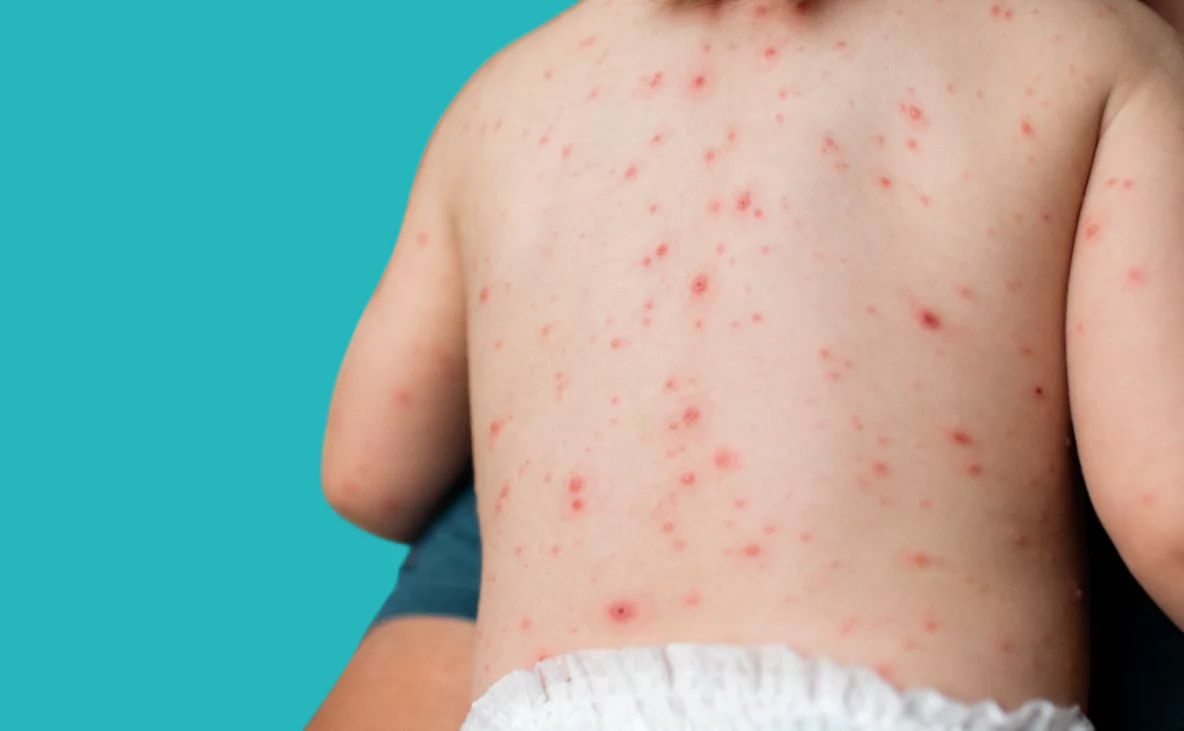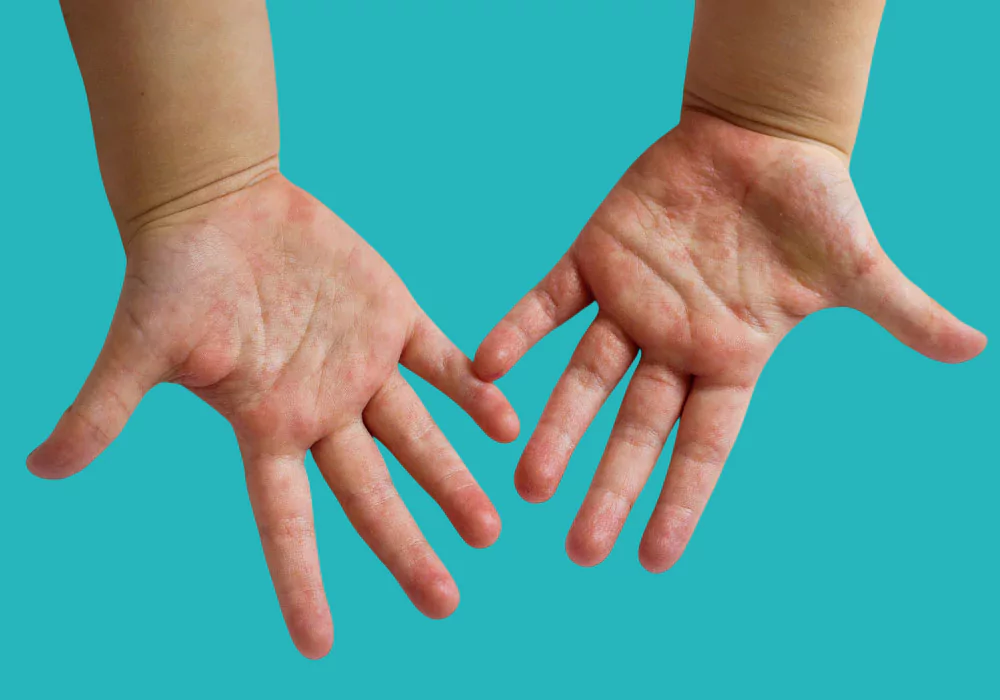Scarlet fever is a bacterial disease that affects school-age children, often starting after a sore throat or tonsillitis.
This condition requires prompt diagnosis and treatment to avoid complications. Details are explained below.
What is scarlet fever?
Scarlet fever is a bacterial infection caused by group A streptococcus bacteria, the same bacteria that cause strep throat.
It is characterized by a red, sunburn-like rash, a high fever, and other characteristic symptoms, as listed below.
Causes of scarlet fever in children
Scarlet fever is caused by a bacterial infection of the throat that is easily transmitted between children. The most prominent causes include:
- Streptococcus bacteria.
- Transmission through sneezing or coughing.
- Using the utensils of an infected person.
- Weakened immune system of the child.
- Neglecting timely treatment for strep throat.
Symptoms of Scarlet Fever in Children

Symptoms usually appear two to five days after infection with the bacteria and include:
- High fever.
- Sore throat and difficulty swallowing.
- Rough red rash that begins on the neck and chest and spreads to the rest of the body.
- Red tongue, known as a strawberry tongue.
- Headache and general fatigue.
- Swollen lymph nodes in the neck.
- Peeling skin several days after the rash.
When should you see a doctor?
Parents should see a doctor immediately if they notice any of the above symptoms, especially if a rash appears or the fever lasts for more than two days, as early treatment is essential to avoid complications.
Methods for Diagnosing Scarlet Fever
Diagnosis is based on a clinical examination and laboratory results, as follows:
- A throat examination to detect tonsillitis or white spots.
- A throat swab test to determine the type of causative bacteria.
- A blood test in some cases to assess the severity of the infection.
Treatments for Scarlet Fever in Children
Treatment depends on eliminating the causative bacteria and alleviating symptoms. This includes the following:
- Using antibiotics prescribed by a doctor, such as penicillin or amoxicillin.
- Giving the child fever-reducing medications, such as paracetamol.
- Encouraging the child to drink adequate amounts of fluids to avoid dehydration.
- Rest completely until the fever subsides.
- Avoid sharing personal items with others to prevent infection.
Complications of Scarlet Fever

If not treated properly, it can lead to serious complications, such as:
- Rheumatic fever.
- Kidney infection.
- Middle ear infection.
- Joint or heart infections.
Preventing Scarlet Fever
To prevent infection, follow these guidelines:
- Wash your hands regularly, especially after sneezing or coughing.
- Do not share cups or eating utensils with others.
- Cover your mouth and nose when coughing or sneezing.
- Teach children good personal hygiene habits.
Is scarlet fever contagious?
Yes, it is transmitted through droplets from sneezing or coughing, or by sharing personal items with an infected person.
Can scarlet fever recur in children?
Yes, the infection can recur if the child is exposed to the same type of causative bacteria again.
Can scarlet fever be treated at home?
It can be treated at home provided the doctor prescribes the antibiotics and follows up regularly until full recovery.
How long does scarlet fever last in children?
Symptoms typically last from one week to ten days with appropriate treatment.
Article Summary
Scarlet fever is an easily treatable disease if detected early and the doctor's instructions are followed.
Therefore, it is important to pay attention to any symptoms of fever or rash in children to ensure a speedy recovery and prevent complications.